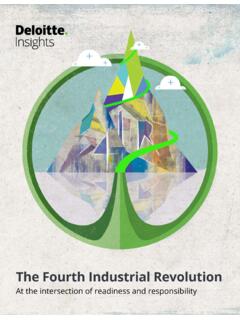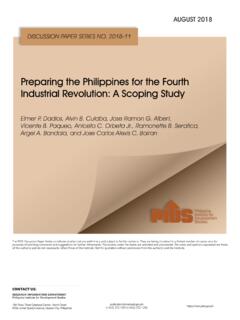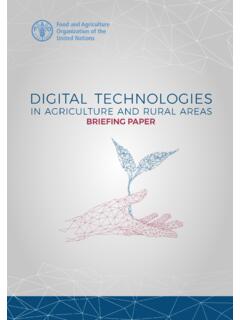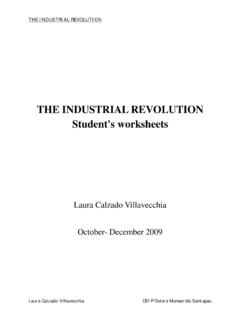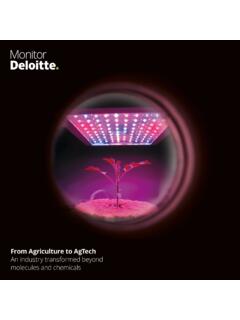Transcription of THE FOURTH INDUSTRIAL REVOLUTION ADVANTAGES …
1 182 Economics and Management ISSN: 2367-7600; 1312-594X Volume: XV, Issue: 2, Year: 2018, pp. 182-187 ЧЕТВЪРТАТА ИНДУСТРИАЛНА РЕВОЛЮЦИЯ ПРЕДИМСТВА И НЕДОСТАТЪЦИ Савица Димитриеска, Александра Станковска, Таня Ефремова THE FOURTH INDUSTRIAL REVOLUTION ADVANTAGES AND DISADVANTAGES Savica Dimitrieska 1, Aleksandra Stankovska2, Tanja Efremova 3 Received: , Accepted: Abstract People have always wanted to improve and ease their lives. They used a variety of means, tools, machines, and other people to achieve that goal. In achieving it, people change the way they live, work and relate to one another. All these rapid and abrupt changes in society that radically changed human life and occurred in a certain period of time are called Revolutions.
2 Human history recognizes about 3 Revolutions so far that have affected all aspects of life. The world is facing the FOURTH INDUSTRIAL REVOLUTION (4IR) which is characterized by a range of new technologies that are fusing physical, digital and biological worlds, impacting all disciplines, economies and industries. The 4IR will fundamentally change people s lives. It covers wide-ranging fields such as Artificial intelligence, The Internet of Things (IoT), robotics, autonomous vehicles, 3D printing, nanotechnology, biotechnology, materials science, energy savings, computing, etc. This paper aims to explain in detail the ADVANTAGES and disadvantages of the FOURTH INDUSTRIAL REVOLUTION and warn people to understand it and make adaptations to it.
3 Understanding the 4IR and its new technologies and their threats is critical for all the nations. Key words: 4th INDUSTRIAL REVOLUTION , robotics, artificial intelligence, 3D printing, new technologies JEL Codes: M31 1. Introduction The 4th INDUSTRIAL REVOLUTION is a term coined by Professor Klaus Schwab, founder and Executive chairman of the World Economic Forum, who described it as a current and developing environment in which disruptive technologies and trends such as the Internet of Things, robotics, virtual reality and Artificial intelligence are changing the way people live and work . The First INDUSTRIAL REVOLUTION , in the 18th and 19th centuries, involved a change from mostly agrarian societies to greater industrialization as a consequence of the steam engine and other technological developments.
4 This REVOLUTION made a transformation from an agrarian and handcraft economy to one dominated by industry and manufacturing. The next Second INDUSTRIAL REVOLUTION was driven by oil and electricity and involved expansion of industries and mass production as well as technological advances. The Third INDUSTRIAL REVOLUTION (Digital REVOLUTION ) involved the 1 European University-Republic of Macedonia, Skopje, Faculty of Economics, Full-time professor in Marketing, PhD, 2 European University-Republic of Macedonia, Faculty of Economics, Full-time professor in Corporate Finance, PhD, 3 National Bank of the Republic of Macedonia, Advisor, Statistics Department, 183 development of computers and IT (information technology) since the middle of the 20th century.
5 IT science was used to automate production. The FOURTH INDUSTRIAL REVOLUTION is growing out of the Third but is considered a new era rather than a continuation because of the explosiveness of its development and the disruptiveness of its technologies. The FOURTH INDUSTRIAL REVOLUTION is differentiated by the speed of technological breakthroughs, the pervasiveness of scope and the tremendous impact of new systems. This new technological era will bring changes in power, shifts in wealth and knowledge. 2. History of INDUSTRIAL revolutions The First INDUSTRIAL REVOLUTION started in 1760 with the invention of the steam engine that allowed the transition from farming and feudal society to the new manufacturing process. The most important invention of this period, which was a catalyst for other achievements, was the steaming machine that was patented and improved by James Watt in 1763 that enabled a larger production with lower energy consumption.
6 Apart from the progress in production, this was also a period of transportation progress and other numerous sciences. Technological changes included: a) the use of new materials, mainly iron and steel, b) the use of new sources of energy, fuel and coal -that became the main factor of industrialization, c) important achievements in the field of communication and transportation (trains) and d) increased use of science in industry. In this period textile and steel were the dominant industries in terms of employment, value of output and capital investments. These technological changes have enabled the exploitation of natural resources and increase production capacity of goods. The Second INDUSTRIAL REVOLUTION is marked by the use of electricity and oil, the period that lasted from 1870 to 1914.
7 This period is characterized by many new inventions, such as telephone, radio, telegraph, diesel and gasoline engines, electricity, internal combustion engine, x-rays without which the world today would be unthinkable. The Second INDUSTRIAL REVOLUTION is recognized by the rapid development of transport (railways and entire trans-continental railway systems were built), rapid industrialization and mass production (Henry Ford has improved automotive industry with the invention of the conveyor belt). The Third INDUSTRIAL REVOLUTION started in 1960s and is usually called the computer or digital REVOLUTION because it was catalysed by the development of semiconductors, mainframe computing (1960s), personal computing (1970s and 80s) and the Internet (1990s).
8 Information technology and electronics in this period automate the production. Today we are living on the brink of the FOURTH INDUSTRIAL REVOLUTION . It began at the turn of this century and builds on the digital REVOLUTION . It is characterized by a much more ubiquitous and mobile internet, by smaller and more powerful sensors that have become cheaper, and by artificial intelligence and machine learning. The 4IR is a kind of fusion of technologies of physical, digital and biological spheres. The main objective of Industry is the introduction of a smart factory that is characterized by: flexibility, efficient use of resources, and integration of clients and business partners into the business process. In a new, smart factory, everything should be connected with everything: the machines communicate with semi-products, individual parts of the machine communicate among themselves, robots and humans are no longer separate by fences, but they are in mutual interaction.
9 For The success of this REVOLUTION lays in the use of so-called big data" which is a technology that allows collecting and processing large quantities of structured and unstructured data in real time. The 4IR is a new concept of economic development that will improve the living standard by integrating production, marketing and consumers with the best communication technologies. The idea of 4IR is 184 that all facilities in the factory (machines, robots, devices, products, computers) and people communicate with each other, mostly wirelessly. The result of this REVOLUTION is high flexible, individualized, mass production with little costs. Consumers get the products tailored to their wants and needs by relative low price.
10 For the production process, it is essential to be as flexible as possible because it must be able to produce different types of products and be able to make a change on the product in the last moment due to the change of the customer's desires. Engineering is expected to participate in the whole product life cycle. The smart products that are the result of 4IR will send a large set of data to their producer that will suggest him to make improvements needed in the future. Even though each of the INDUSTRIAL revolutions can be considered as a separate event, it is better to see them as a series of events where one REVOLUTION builds on the innovations of the previous one and adopts a new and advanced form of production. 3. ADVANTAGES of the FOURTH INDUSTRIAL REVOLUTION There is a connection between the four INDUSTRIAL revolutions and the five ages of civilization: the hunter and gather age, the agricultural age, the INDUSTRIAL age, the information age, and the emerging digital age.

